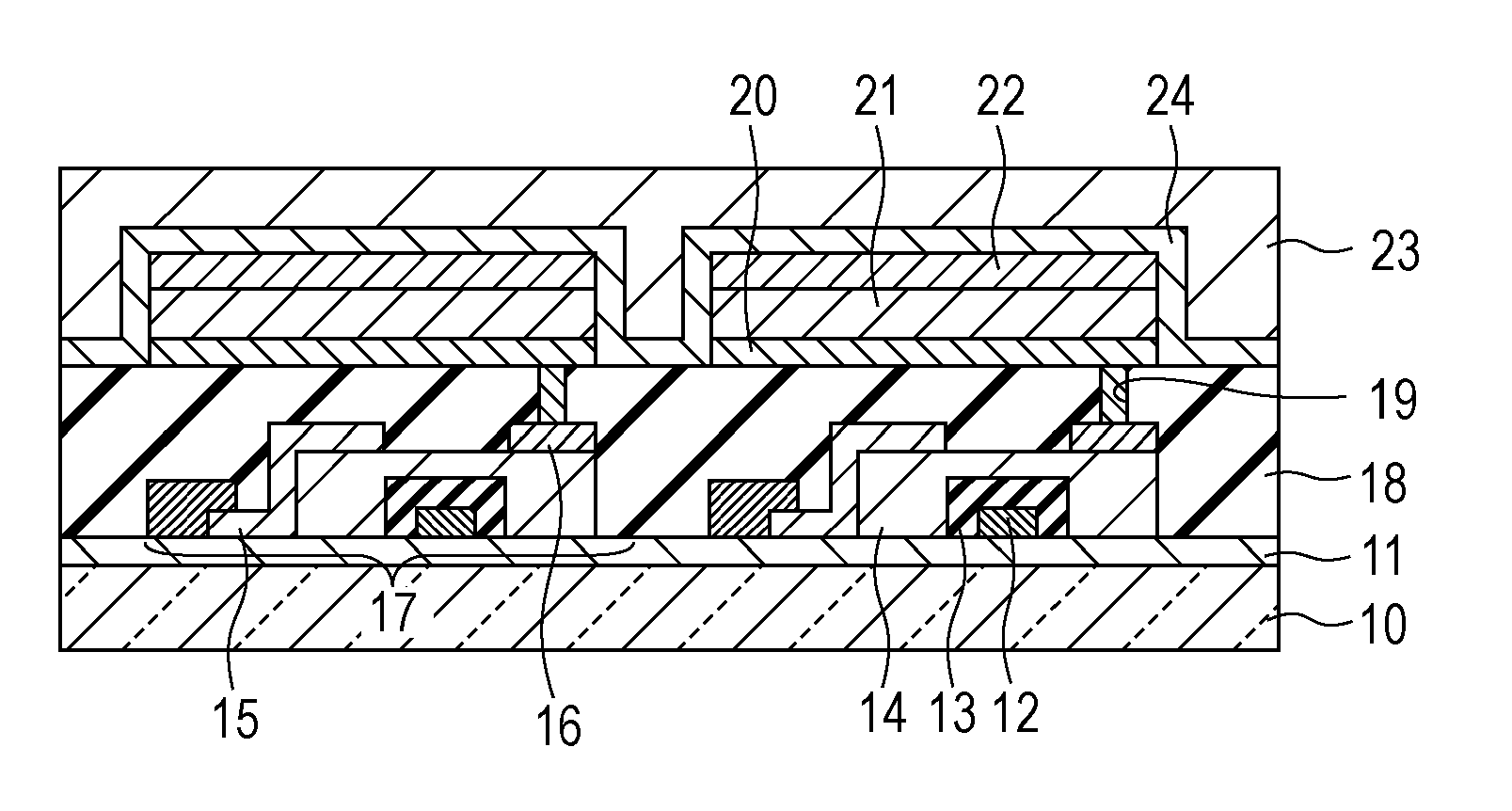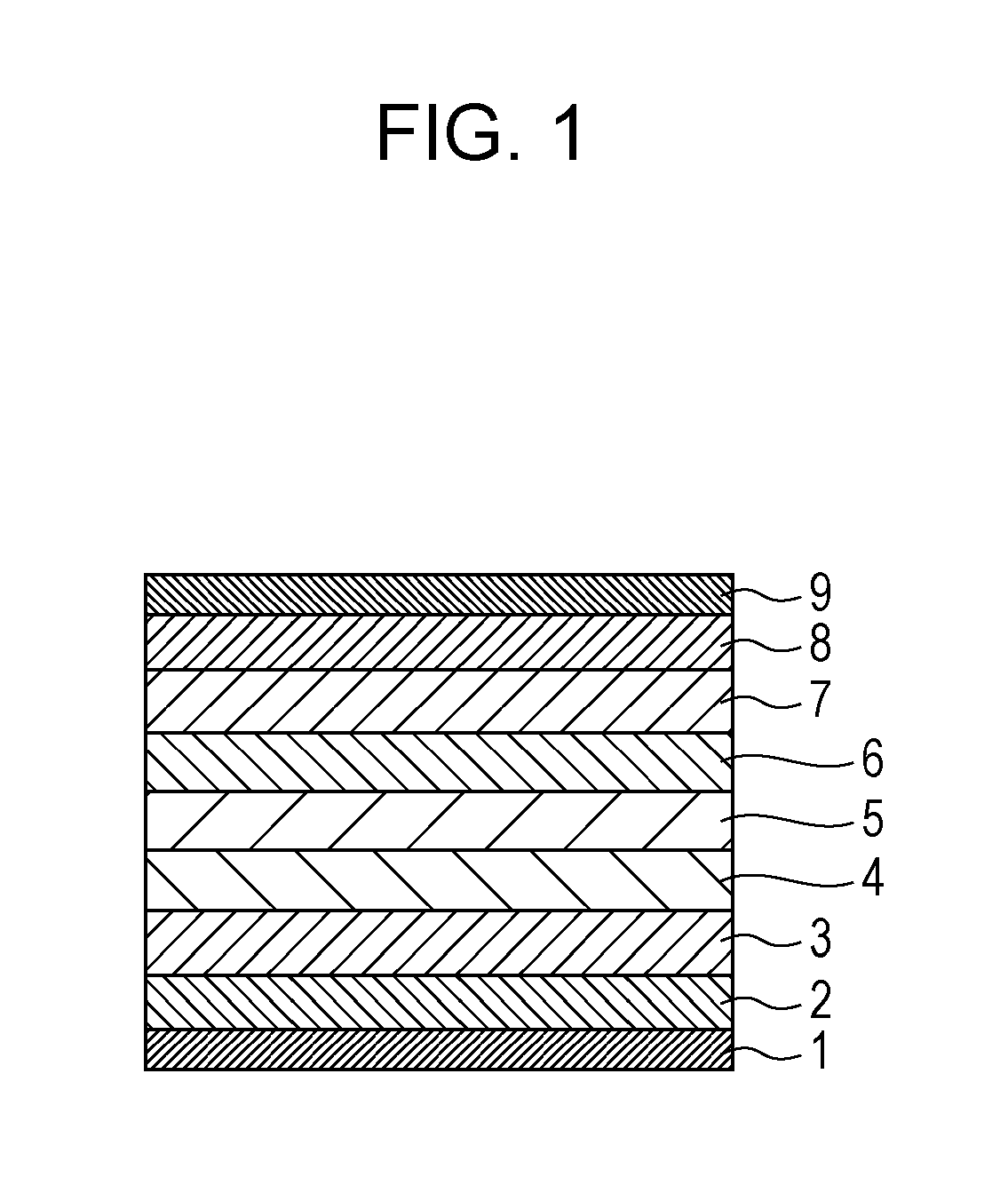Condensed polycyclic compound and organic light emitting element including the same
a technology of condensed polycyclic compounds and light emitting elements, which is applied in the direction of anthracene dyes, instruments, static indicating devices, etc., can solve the problems that the light emitting efficiency and color purity of the above compound are not sufficient to be used for an organic, and achieve high light emitting efficiency, high color purity, and high efficiency
- Summary
- Abstract
- Description
- Claims
- Application Information
AI Technical Summary
Benefits of technology
Problems solved by technology
Method used
Image
Examples
example 1
Synthesis of Intermediates 1 to 3
[0149]
[0150]The following reagents and solvent were charged in a 200-ml recovery flask.
5-bromo-acenaphthene quinone: 2.6 g (10 mmol)
1,3-diphenyl-2-propanone: 2.1 g (10 mmol)
Ethanol: 50 ml
[0151]To this reaction solution, a solution prepared by dissolving 0.31 g of potassium hydroxide in 30 ml of ethanol was dripped at 60° C. while stirring was performed. After the dripping was completed, heating was further performed for 1 hour while the reaction solution was refluxed.
[0152]After the reaction was completed, the reaction solution was cooled to room temperature and was then filtrated. An obtained solid was washed with ethanol, so that 4.1 g of the intermediate 1 was obtained (yield: 95%).
[0153]Subsequently, the following reagents and solvent were charged in a 200-ml recovery flask.
Intermediate 1: 4.1 g (9.5 mmol)
Anthranilic acid: 1.6 g (11 mmol)
Isoamyl nitrite: 1.3 g (11 mmol)
Toluene: 100 ml
[0154]This reaction solution was heated at 95° C. for 3 hours i...
example compound b-1
Synthesis of Example Compound B-1
[0164]
[0165]The following reagents and solvent were charged in a 200-ml recovery flask.
Intermediate 8: 0.50 g (0.62 mmol)
Boron trifluoride-diethylether complex: 0.44 g (3.1 mmol)
dichloromethane (dehydrated): 50 ml
Trifluoroacetic acid: 10 ml
[0166]To this reaction solution, 0.28 g of 2,3-dichloro-5,6-dicyano-1,4-benzoquinone (DDQ) was slowly added at room temperature. After the addition was completed, stirring was performed at room temperature for 1 hour in a nitrogen atmosphere, and the dissipation of the intermediate 8 was then confirmed by a thin layer chromatography (TLC).
[0167]Subsequently, after 0.23 g of ferrocene was added to the reaction solution and was then stirred for 30 minutes, the reaction was stopped. Furthermore, after 50 ml of methanol was added to precipitate a solid, filtration was performed. After the solid thus obtained was washed with methanol, recrystallization was performed using toluene / heptane, so that 0.40 g of the example c...
example 2
Synthesis of Intermediate 9
[0171]
[0172]Except that 1,3-diphenyl-2-propanone used for the synthesis of the intermediates 1 to 3 was changed to 1,3-bis(3,5-di-tert-butylphenyl)-2-propanone, the intermediate 9 was obtained by a method similar to that of the synthesis of the intermediate 3 of Example 1.
PUM
| Property | Measurement | Unit |
|---|---|---|
| emission peak wavelength | aaaaa | aaaaa |
| peak wavelength | aaaaa | aaaaa |
| peak wavelength | aaaaa | aaaaa |
Abstract
Description
Claims
Application Information
 Login to View More
Login to View More - R&D
- Intellectual Property
- Life Sciences
- Materials
- Tech Scout
- Unparalleled Data Quality
- Higher Quality Content
- 60% Fewer Hallucinations
Browse by: Latest US Patents, China's latest patents, Technical Efficacy Thesaurus, Application Domain, Technology Topic, Popular Technical Reports.
© 2025 PatSnap. All rights reserved.Legal|Privacy policy|Modern Slavery Act Transparency Statement|Sitemap|About US| Contact US: help@patsnap.com



